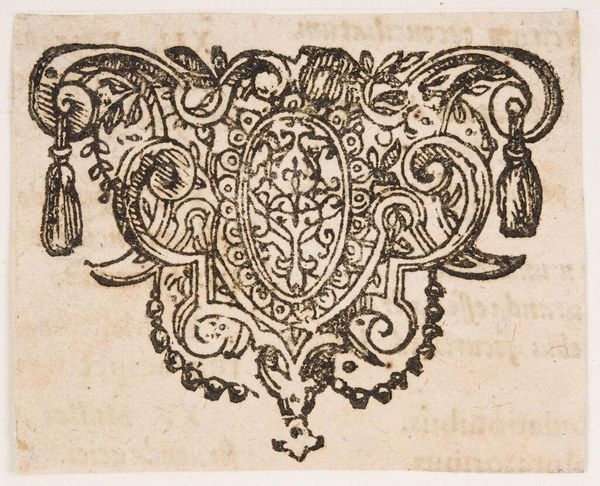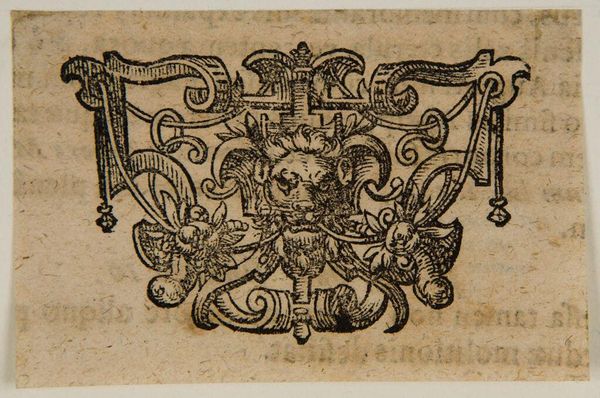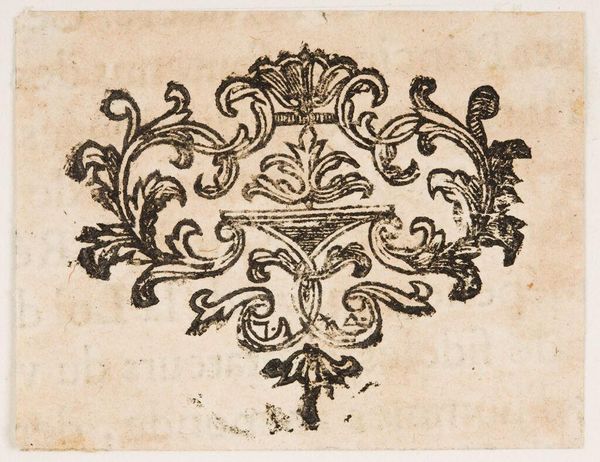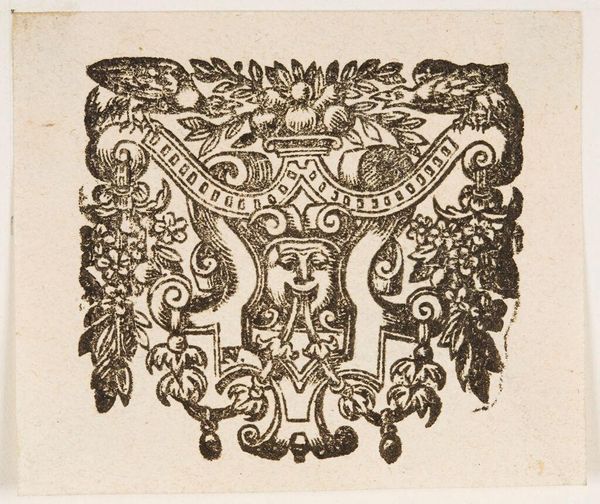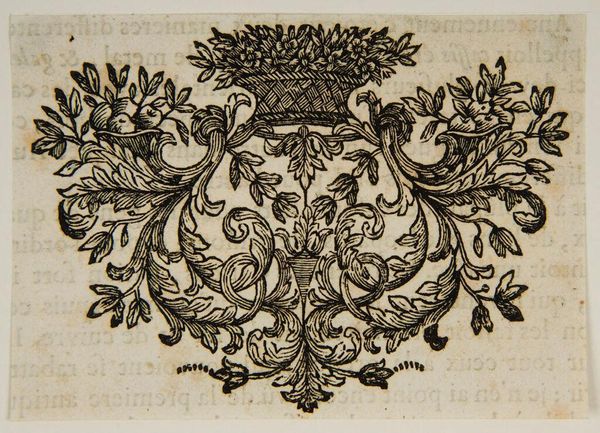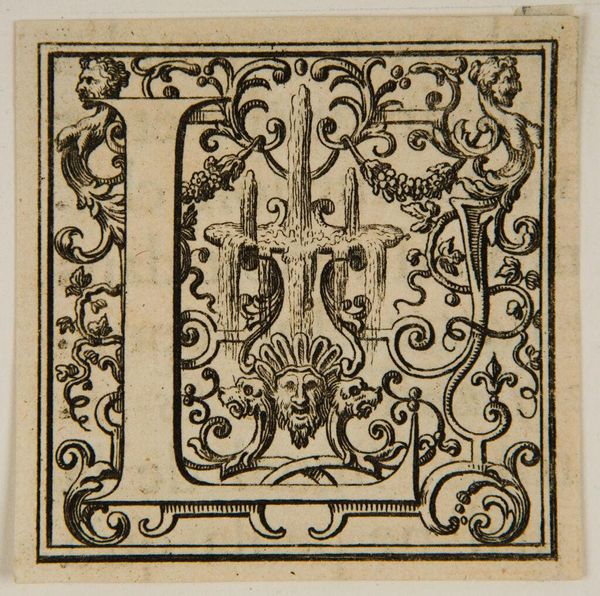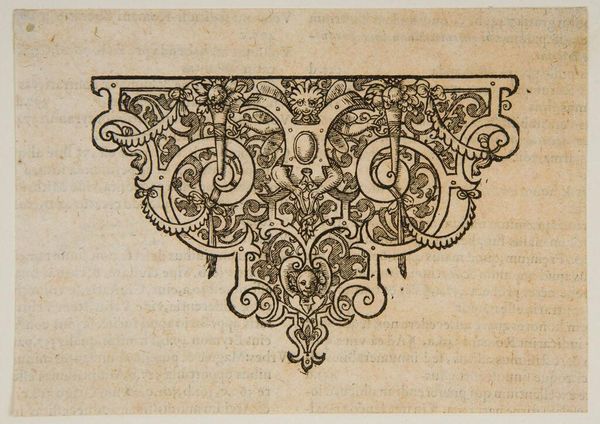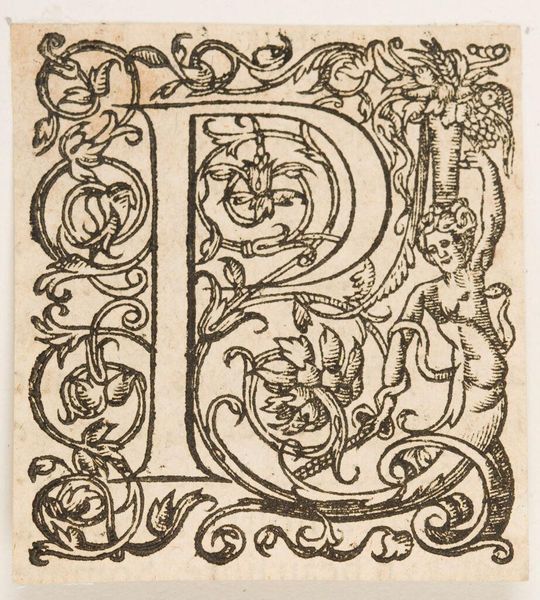
Copyright: CC0 1.0
Curator: This small, anonymous work from the Harvard Art Museums is called "Head-piece." It's an intriguing example of early printmaking. Editor: Immediately, I'm struck by the density of the image—a riot of hybrid creatures and swirling forms. Is that a sea horse? Curator: Indeed! The imagery echoes a fascination with the bestiary, common in early decorative arts. These motifs often adorned manuscripts and early printed books. Editor: And what about the satyr-like figures nestled amongst the foliage? They suggest a pagan undercurrent, maybe a nod to classical mythology, playfully adapted. Curator: That's a strong point. Early printed images often served as a means to disseminate and re-imagine these classical themes for a broader audience. Editor: It’s incredible how this little strip manages to condense so much cultural baggage, making us question the nature of cultural boundaries. Curator: I agree. This piece reminds us of how visual culture was transmitted in the early modern world and the role of institutions in preserving our collective heritage.
Comments
No comments
Be the first to comment and join the conversation on the ultimate creative platform.
